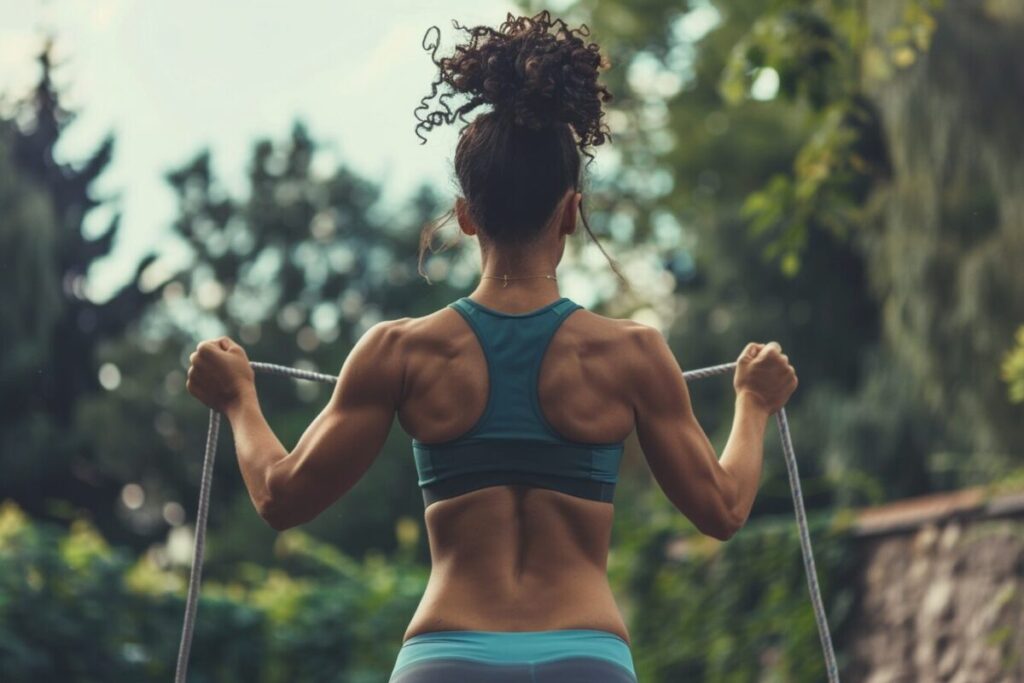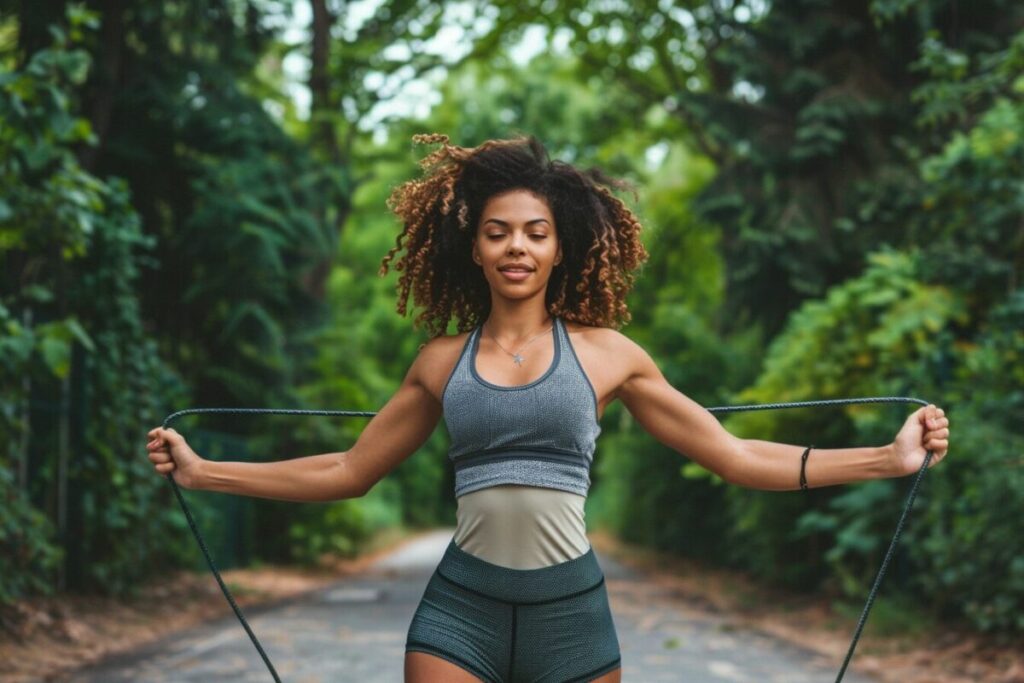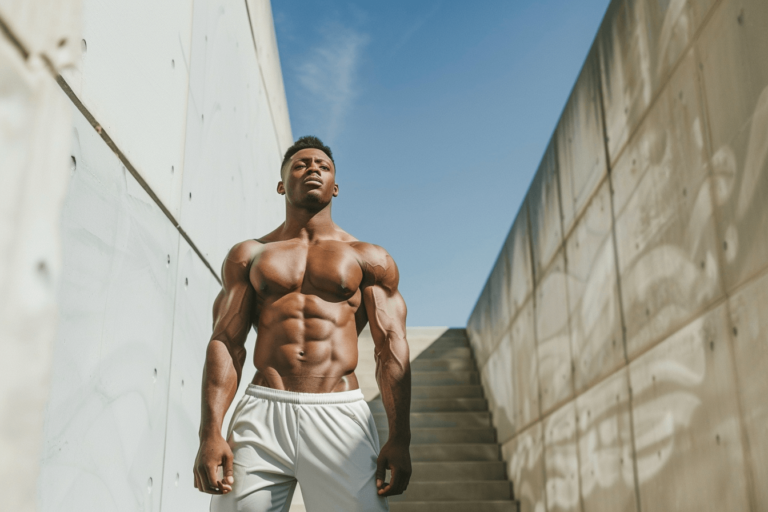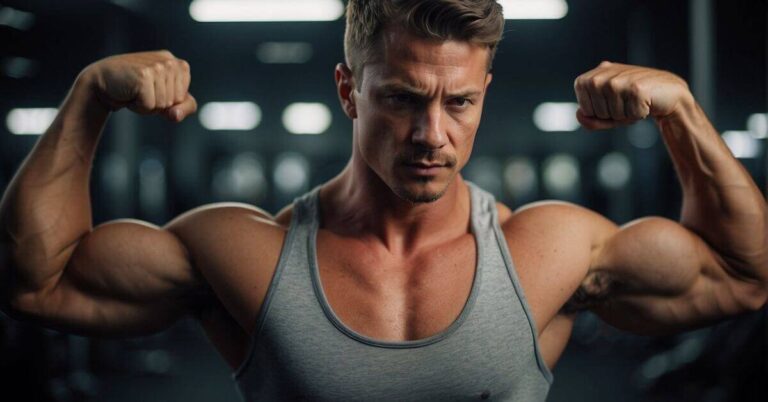“Why do my shoulders feel sore after jumping rope?” is a common question many ask.
Jumping rope stands out as one of the most effective cardiovascular exercises.
Doubtful? Try jumping rope for the duration you typically spend on steady-state cardio — there’s no comparison.
However, some may find their shoulders ache, limiting their jump rope time.
What’s causing this discomfort? Let’s take a look at it.
Why Do Your Shoulders Feel Sore After Jump Rope?
Feeling the strain on your shoulders while jumping rope often results from poor technique.
Focus on spinning the rope from your wrists, not your shoulders.
Keep your arms at the right width and height to avoid unnecessary deltoid activation.
Additionally, check if the jump rope length is appropriate to prevent excessive shoulder engagement.
Improper Wrist Engagement in Jump Rope

To spin the jump rope effectively, focus on using your wrists, not your entire arm.
Using your arms can unnecessarily engage the shoulder joint, particularly when fatigue sets in.
While some shoulder activation is inevitable, it shouldn’t lead to soreness.
If you feel strain in your shoulders, it’s likely due to improper arm and shoulder usage.
Practice a wrist flick with each rope rotation to improve technique.
By mastering wrist movements, you’ll find advanced jump rope techniques easier to tackle, such as double under.
Double Under Tutorial That WORKS!
Your arms are positioned too far out to the side
If your shoulders ache after jumping rope, it could be due to holding your arms too wide.
This is a common mistake that can strain your shoulders unnecessarily.
Keep your arms relaxed and close to your sides to minimize shoulder involvement.
When your arms are out wide, you engage the shoulder muscles more, leading to soreness.
Focus on keeping your arms tight to your body while jumping rope for better technique and reduced shoulder strain.
Your Arms Are Too High

Having your arms too high during jump rope can strain your shoulders.
To avoid this, let your arms hang naturally by your sides, with your hands around pocket height.
The length of your arms and your height may also influence the correct arm position.
Keeping your arms straight and relaxed reduces strain on your shoulders and helps optimize your jump rope technique.
Your Jump Rope Is Not Sized Correctly
The length of your jump rope affects your arm position.
If the rope is too long, you might bend your elbows and hold it too high.
Conversely, a short rope may lead to keeping your arms closer to your body but can cause you to hunch over.
To check the right height, step on the middle of the rope and ensure the ends reach your armpits.
Adjust accordingly for comfort and effectiveness.
Using A Weighted Jump Rope?
The weight of your jump rope significantly impacts your shoulder comfort post-jumping.
Speed and trick ropes usually weigh about 113 grams, providing minimal strain.
In contrast, weighted jump ropes range from one to six pounds, offering added cardio benefits and upper body resistance.
Opting for a heavier rope intensifies the shoulder workout while enhancing conditioning.
It’s beneficial to incorporate weighted ropes for an effective workout, acknowledging that heavier ropes increase shoulder engagement during exercise.
Concluding Thoughts
Understanding why your shoulders may feel sore after jumping rope is key.
Proper technique involves keeping your arms relaxed by your sides and using wrist flicks to spin the rope. This technique helps prevent shoulder strain.
Adjusting the length of your rope can impact shoulder activation, especially if it forces you into an unnatural arm position.
Using a weighted rope increases the intensity of the arm and shoulder workout.
Once you’ve mastered technique, rope length, and weight selection, jumping rope becomes one of the top conditioning exercises.






